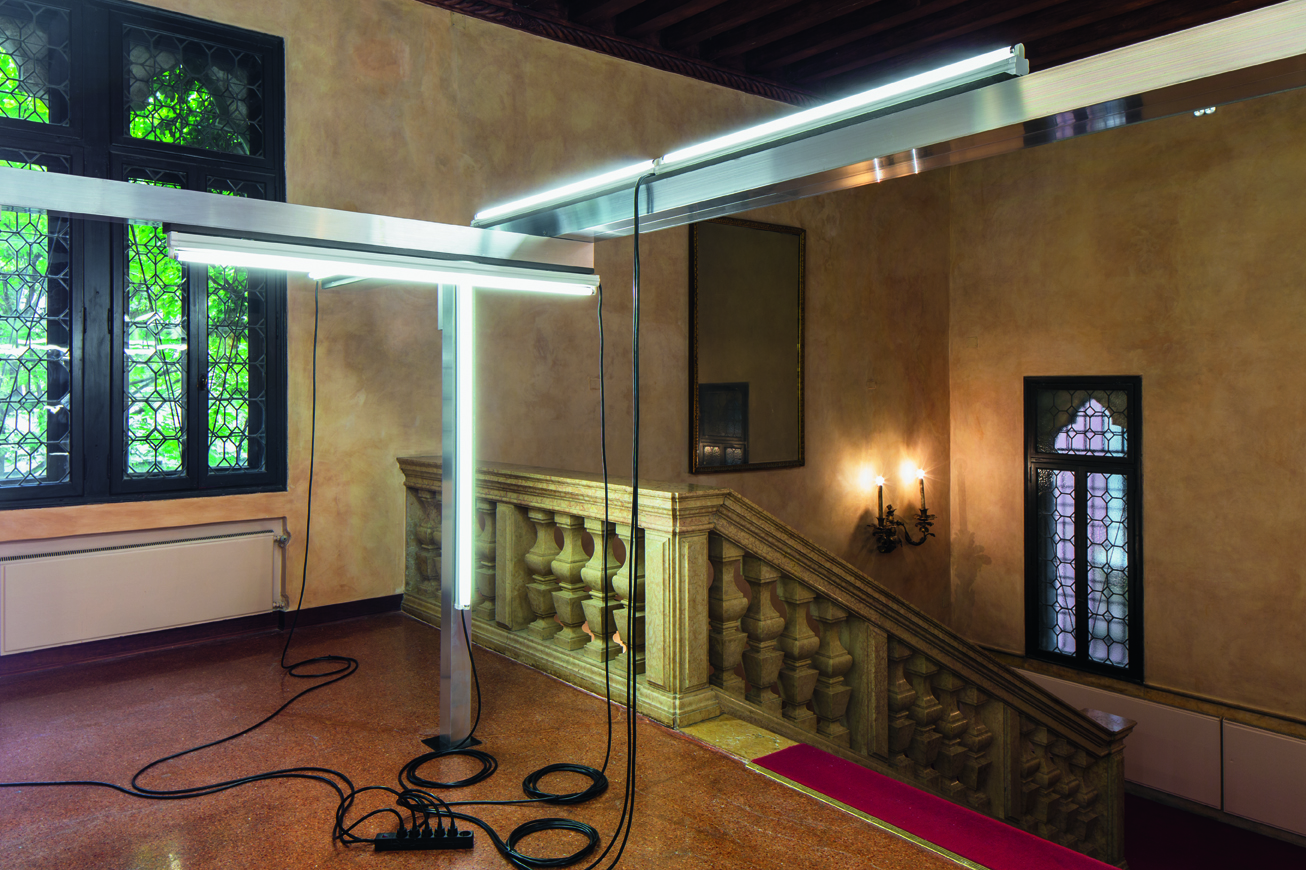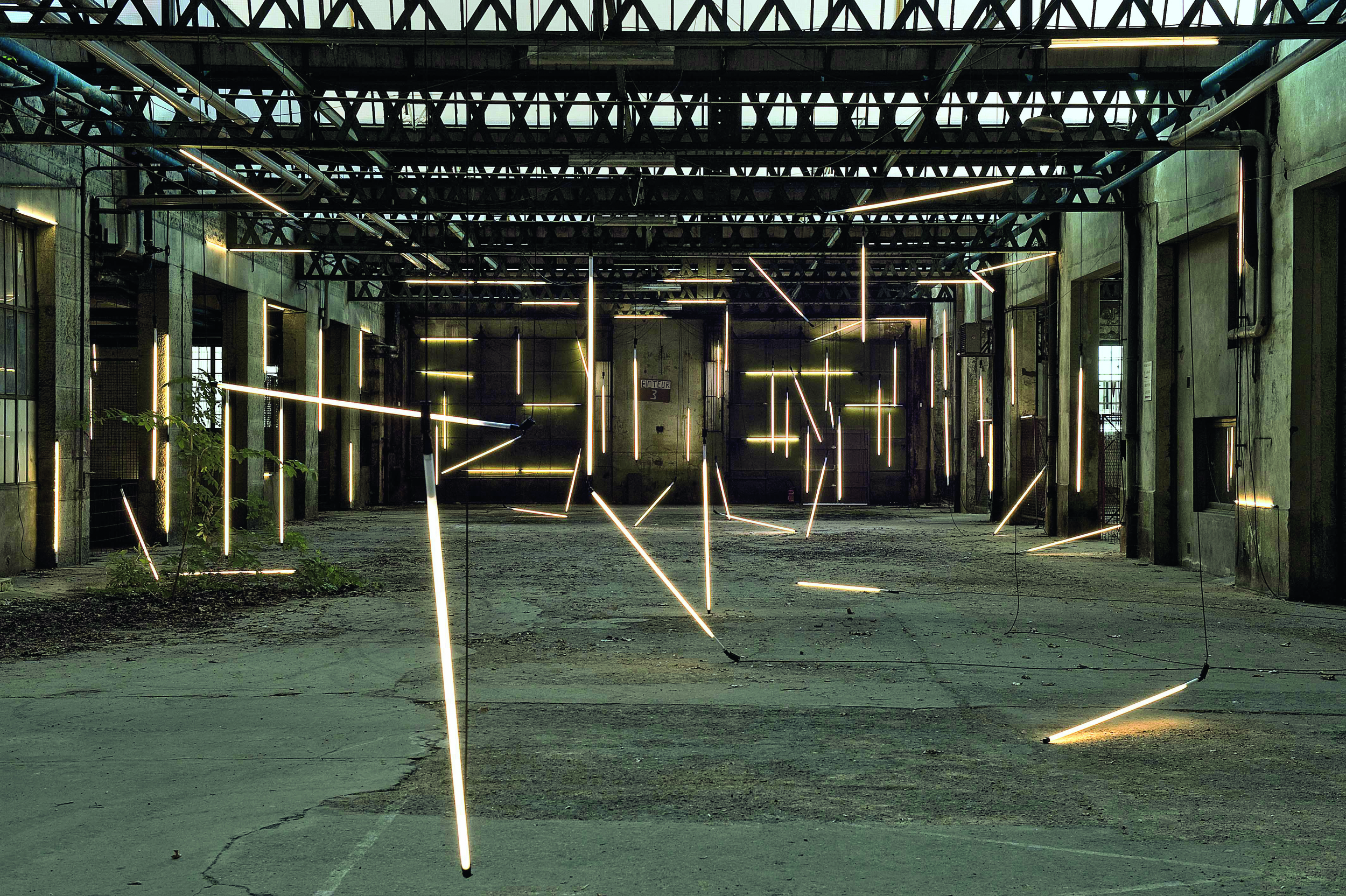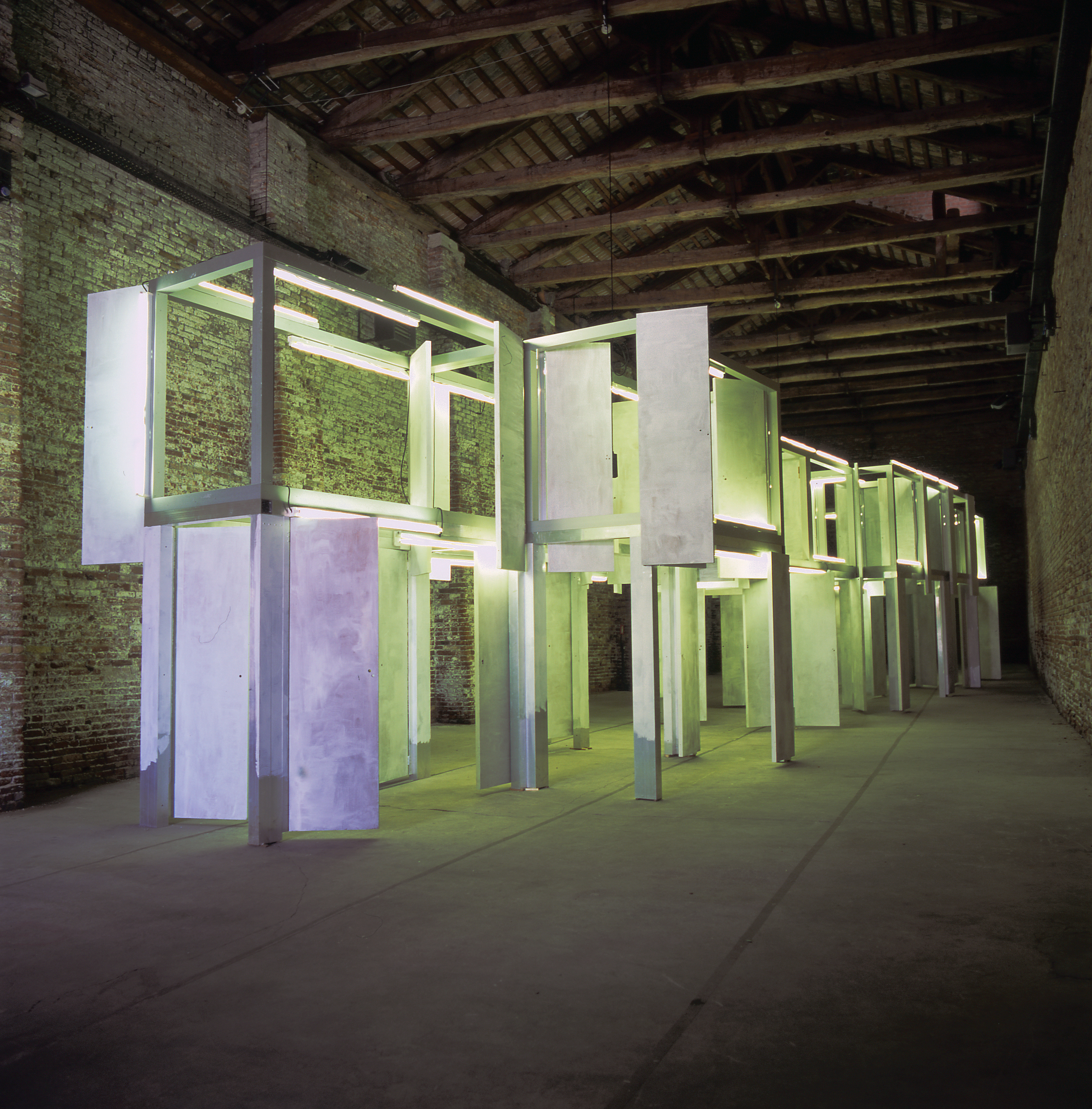Pedro Cabrita Reis / interview



Pedro Cabrita Reis’ work can be characterized by an idiosyncratic philosophical and poetical discourse embracing a great variety of means: painting, sculpture, photography, drawing, and installation composed of industrial, found materials and manufactured objects. By using simple materials that are submitted to constructive processes, Pedro Cabrita Reis recycles almost anonymous reminiscences of primordial gestures and actions repeated in everyday life.
[Kwon] Please tell me about your recent exhibition ‘a remote whisper’ at Palazzo Falier, as a collateral event of the 55th International Art Exhibition – la Biennale di Venezia. What were the ideas and plans you had in mind for developing the structural pieces installed throughout the rooms and the walls?
[Cabrita Reis] I have a particular fascination for abandoned places. Places where one can still feel the presence of people even if no one is there anymore. And, above all, what becomes inevitably clear in such occasions is the perception of time and its inherent ‘transparence’. The crossing and mutual contamination of different kinds of time. An actual time, embodied in the viewer’s presence, let’s say, the ‘now’ and time of the ‘absence’, a past recognized through the symptoms of a non-presence so to speak, almost a particular form of oblivion which, nevertheless, still has a remote whisper.
In Venice I have proposed an itinerary, a trajectory through which the viewer / wanderer integrates in one experience the different “corpus” of time revealed during the passage through the rooms, may it be the time of the palazzo, the time of the work, the viewers perception of their own time. I strongly believe that art’s ultimate and definitive aim is to enlarge one’s intelligence, in its own specific way, differently from mathematics or poetry. The complexity of issues embodied in <A Remote Whisper>, from aesthetical to political, from material to spiritual, is in itself a possible model of a constructed and different new and other time.
[Kwon] The industrial materials that you have used for your architectural installations fill the space similar to painting elements such as lines and planes. I am wondering the process the medium and its arrangement are decided.
[Cabrita Reis] As one can see when walking through <A Remote Whisper>, I make drawings, I do paintings, I do sculptures, and sometimes I photograph and even write. I only did one video work once. All these different disciplines coexist in my mind and in my studio and it certainly exists a process of thinking which eventually brings all this together, unifying the many different ends, towards a unique and complex encounter mirroring the complexity of the world itself and one’s experience of it.
[Kwon] How have you been influenced sociologically and culturally by the country you grew up in and the other cities you have lived and worked? What artistic changes did these influences bring to your work?
[Cabrita Reis] Well, we are all under influence it might come either from local or transnational contexts. Between travelling and returning to a possible origin, artists transform the magma of all these levels of interaction into a specific form of intelligence which is his or her own work. The idiosyncrasy of each different body of work tells us about the inevitable individuality of each author.
[Kwon] Are there any upcoming creations / projects that you would like to tell us about?
[Cabrita Reis] For the moment I am in the country getting ready for the harvest of my olive trees to do this year’s olive oil. Next year I will have shows in New York, Toronto, Italy, and Norway. Meanwhile, I keep looking around, collecting stuff I found in the streets, and making drawings in the studio as well as dry martini cocktails in the kitchen.
Pedro Cabrita Reis was born in 1956 in Lisbon where he lives and works. His work has been shown in many international shows, such as the 9th Kassel Documenta and the 24th São Paulo Bienale. In 2003, he represented Portugal at Venice Bienale. His selected solo and group exhibitions include: Sometimes one can see the clouds passing by, Kunsthalle Bern, 2004; Stillness, Camden Arts Centre, London, 2004; True Gardens #3 (Dijon), FRAC Bourgogne, Dijon, 2005; Pedro Cabrita Reis, MACRO; Museo d'Arte Contemporanea, Roma, 2006; La ciudad de adentro, OPA, Guadalajara, 2007; True Gardens #6, Kunsthaus Graz, Graz 2008; Pedro Cabrita Reis, Fondazione Merz, Torino, 2008; La Línea del Volcán, Museo Tamayo, Mexico City, 2009; Deposição, Pinacoteca de São Paulo, 2010, One after another, a few silent steps, Hamburger Kunsthalle, Hamburg, 2009; One after another, a few silent steps, Carré d’Art, Nîmes, 2010; Pedro Cabrita Reis. One after another, a few silent steps, M, Museum for Contemporary Art, Leuven, 2011, One after another, a few silent steps, Museu Colecção Berardo, Lisbon, 2011 and, States of Flux – Pedro Cabrita Reis at Tate Modern, London, 2013.
Image Courtesy of Pedro Cabrita Reis
This interview was published in bob Magazine Vol. 111 (October 2013) pp.118-123
